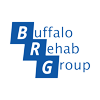How PT and OT Help Children with Autism Spectrum Disorder
Receiving an autism spectrum disorder (ASD) diagnosis for your child can feel overwhelming, bringing a mix of emotions and a flood of questions.
If you’re wondering what this diagnosis means for your child’s growth and how you can best support them, know that you’re not alone.
At its core, an ASD diagnosis is simply a starting point — a way to understand your child’s unique strengths and challenges and to begin building a path toward helping them thrive.
Keep reading to learn more about what ASD is, how it can affect children’s development, and how Physical and Occupational Therapy can provide tools and support to help your child grow in confidence and independence.
What Is Autism Spectrum Disorder (ASD)?
ASD is a developmental condition that affects how a person interacts with the world around them. It’s called a “spectrum” because it includes a wide range of characteristics and challenges.
While every child with ASD is unique, some areas commonly affected include:
- Social Skills: Children may find it hard to engage with others, read social cues, or build relationships in typical ways.
- Communication: This can range from delayed speech to difficulty understanding language or expressing needs and emotions.
- Behavior: Repetitive behaviors, rigidity with routines, or difficulty managing changes can be common.
- Motor Skills: This is an area parents don’t always expect to be impacted, but for many children with ASD, there can be delays in reaching milestones like sitting, crawling, walking, or balancing.
How ASD Can Affect Motor Skills and Sensory Processing
Motor skills often go hand-in-hand with sensory processing challenges in children with ASD.
Here’s what that can look like:
- Milestone Delays: You may notice your child taking longer to master skills like climbing stairs, jumping, or catching a ball. Fine motor skills, like using utensils or holding a pencil, may also develop more slowly.
- Balance and Coordination Issues: Tasks that require balance—like riding a bike or hopping on one foot—might be more difficult.
- Sensory Processing Difficulties: Some children with ASD are highly sensitive to sounds, textures, lights, or movement, while others may seek out sensory input, like spinning or jumping. These differences in how the brain processes sensory information can affect how they interact with the world, sometimes leading to behaviors that help them self-regulate.
These challenges with sensory processing and motor skills often connect to social and communication difficulties. For example, if a child struggles with motor skills, it might limit their ability to join in on games with peers, which could affect their social confidence. Similarly, sensory overwhelm might lead to meltdowns or difficulty focusing, which could be misunderstood as behavioral issues.
How Physical and Occupational Therapy Can Help
The good news is that Physical and Occupational Therapy are designed to meet your child where they are and provide targeted support to help them grow.
Here’s how we can help:
- Improving Motor Skills: Physical therapy can focus on helping your child develop strength, balance, and coordination. From working on gross motor milestones to activities that build endurance or flexibility, PT can give your child the tools to feel more confident in their body.
- Building Independence in Daily Activities: Occupational therapy addresses fine motor skills and everyday tasks, like getting dressed, writing, or using utensils. We also help with sensory integration, finding strategies to help your child manage sensory input more effectively.
- Promoting Sensory Regulation: Both PT and OT can provide sensory-based activities to help your child feel more comfortable and in control. Whether that’s creating a calming sensory routine or introducing sensory play, we’ll tailor strategies to your child’s specific needs.
- Encouraging Social and Emotional Growth: By helping your child gain confidence in their motor skills, manage sensory experiences, and communicate their needs more effectively, therapy also supports their ability to connect with others.
Moving Forward
If your child has been recently diagnosed with ASD, remember: this is just the beginning of a journey that’s all about discovering what makes your child unique and helping them grow into their full potential.
Remember, you don’t have to figure it all out at once, and you don’t have to do it alone. Physical and Occupational Therapy can be a wonderful place to start, providing tools, guidance, and encouragement for both you and your child.
Is your child struggling with motor skills, sensory challenges, or everyday tasks?
Our therapists are here to help. With a personalized plan, we’ll guide your child through fun, tailored activities to build strength, improve coordination, and foster independence — all while supporting your family every step of the way.
Treatment is covered by insurance, no referral is needed, and with flexible scheduling and expanded hours across all our clinics, you can find a place and time that work for you.
Click the button below to get started.
